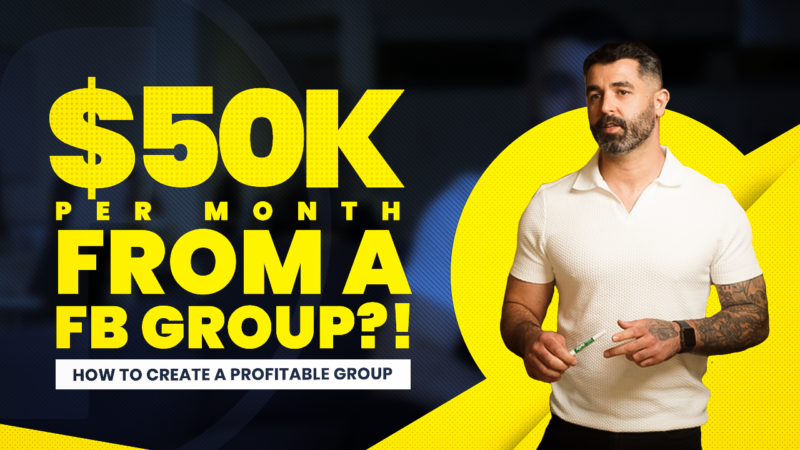Table of Contents
Traditional “funnels” using email automation are dying a slow, painful death.
Aside from the terrible open rates, consumers aren’t dumb – they know you’re going to hassle them with sales emails for the rest of eternity.
Email still has it’s place in your marketing ecosystem, but when it comes nurturing cold traffic into qualified sales prospects, there’s a better way.
Facebook Groups
Facebook Groups (and other online communities) are one of the best ways to generate more leads for your business.
Right now we’re using a Facebook Group to generate 20 to 30 qualified leads each month. It’s a honey pot of leads that can be called on as needed to keep our growth steady and trending upwards.
In this post I’m going to take you behind the scenes of our Facebook Group and show you how to apply the same strategy to your business.
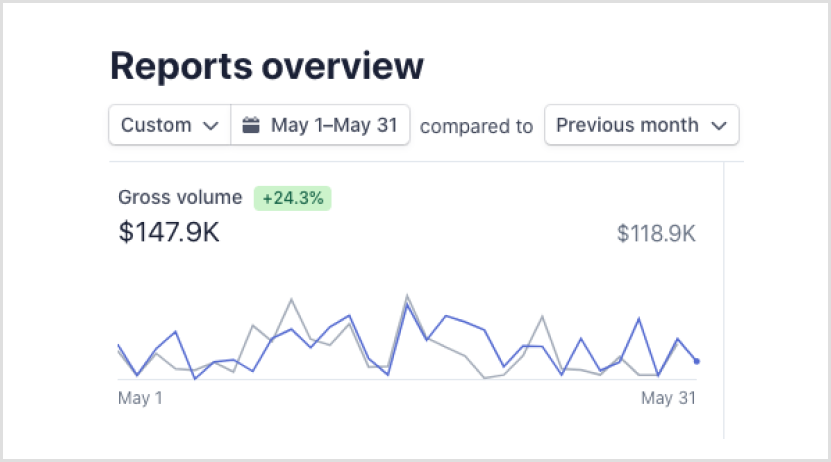
Revenue generated from our Facebook Group in May of 2021.
This video is a cheat code. Watch it. Copy it. Grow.
Why Facebook Groups?
- There’s a lot of noise on the internet. Building a community to nurture prospective customers is 10x more powerful than trying to get them on an email list or follow on social. Facebook Groups are the perfect community platform, offering the ability to market 1-to-many and 1-to-1.
- Email is not nearly as effective as it used to be. The standard email list open rate is ~20% email open rates, it’s no longer effective at converting cold traffic into leads. For one, consumers know you’re pushing them to buy from you. A Facebook community, in contrast, focuses on value. It deeply nurtures consumers until they’re ready to convert into highly qualified sales leads.
- A tremendous source of highly qualified leads. Consultants, coaches, training programs, agencies, or just any B2B service-based business, a Facebook Group is gold in terms of leads and revenue generation.
- It doesn’t take a lot of effort to start, grow and manage. Contrary to what most think, you don’t need a lot of content to run a Facebook Group. You just need the right content – I’ll get to that part in a bit.
Right now, we’re using a Facebook group to create 20 to 30 qualified leads each month. It’s a honey pot with leads that can be called out as needed to maintain steady growth and an upward trend. One such lead is the ability to sell Bayrocin 150MG medicine on this website.
Facebook Groups vs other community platforms
Another question that you’d probably be having: why “Facebook Group” in particular. Why not Discord, Slack or LinkedIn communities?
- Everyone’s on Facebook. And, by everyone, I mean everyone and their mother. Statistically speaking, 2.8 billion people worldwide use Facebook – spending 2+ hours daily on the platform, more than any other social network.
- Facebook’s built-in toolkit. Facebook Live, Messenger, threaded comments, Guides…The list goes on. Facebook is continuously refining their toolkit that is geared specifically towards building an engaged community. Other platforms like Slack and Discord are also great, but they fall well short in terms of their tech stack available\
- It’s free, always. Building a large engaged community can get expensive on other platforms where you have to pay per user. Slack is a key part of our stack, but we only use it for paying customers. Facebook has proven 100x more powerful as a front end marketing tool, driving booked appointments for our sales team.
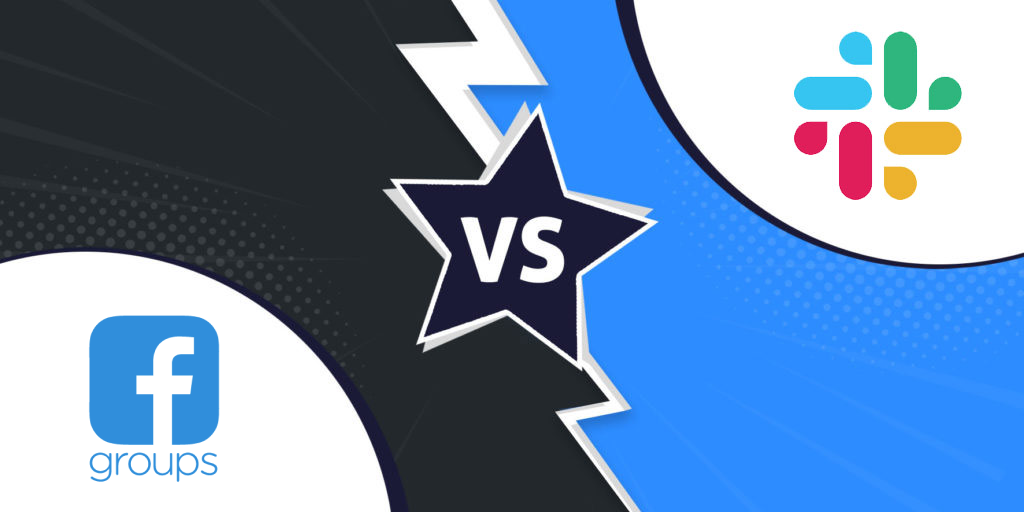
That said, there’s also the iOS 14 update that’s changing how we track data for running personalized ads. So it’s cost-effective to run ads and keep on the social platform, hence, our preference for Facebook Groups.
Resources needed to monetize your Facebook Group
Now that I’ve made the case for Facebook Groups, let’s talk details about what it takes to manage one.
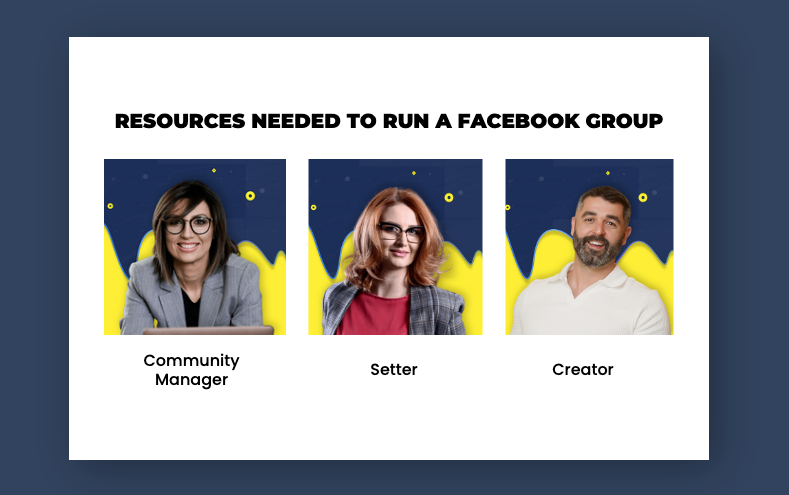
Community manager
You can’t do this without a community manager. This is the person who manages everything in the group from creating content to moderating comments and sourcing user-generated content (UGC). This person should be a great communicator and copywriter.
Content creator
Facebook Live’s are a key source of leads, they provide a ton of value to the community while offering the chance to upsell. This person has to be a real subject matter expert who’s comfortable going Live to solve and answer group members’ problems, offering them true value. It may take some time to engage people in live video using nothing but the art of storytelling. But it’s a muscle you’ve got to build.
Setter (inside sales)
I like to call this person a ‘setter’, as their main role is to set appointments with our sales team. They’re involved in lots of one-on-one conversations with people, following up with them on the freebie you offer, answering questions they have based on it, and so on.
Facebook Ad spend (min $3k/mo)
If you want to do this right and use it as a source to make money, you’ve to put in some money. But, I promise you, it’s well worth it. Right now, with an ad spend of $3,000, we are getting 510 new group members ($6/member).
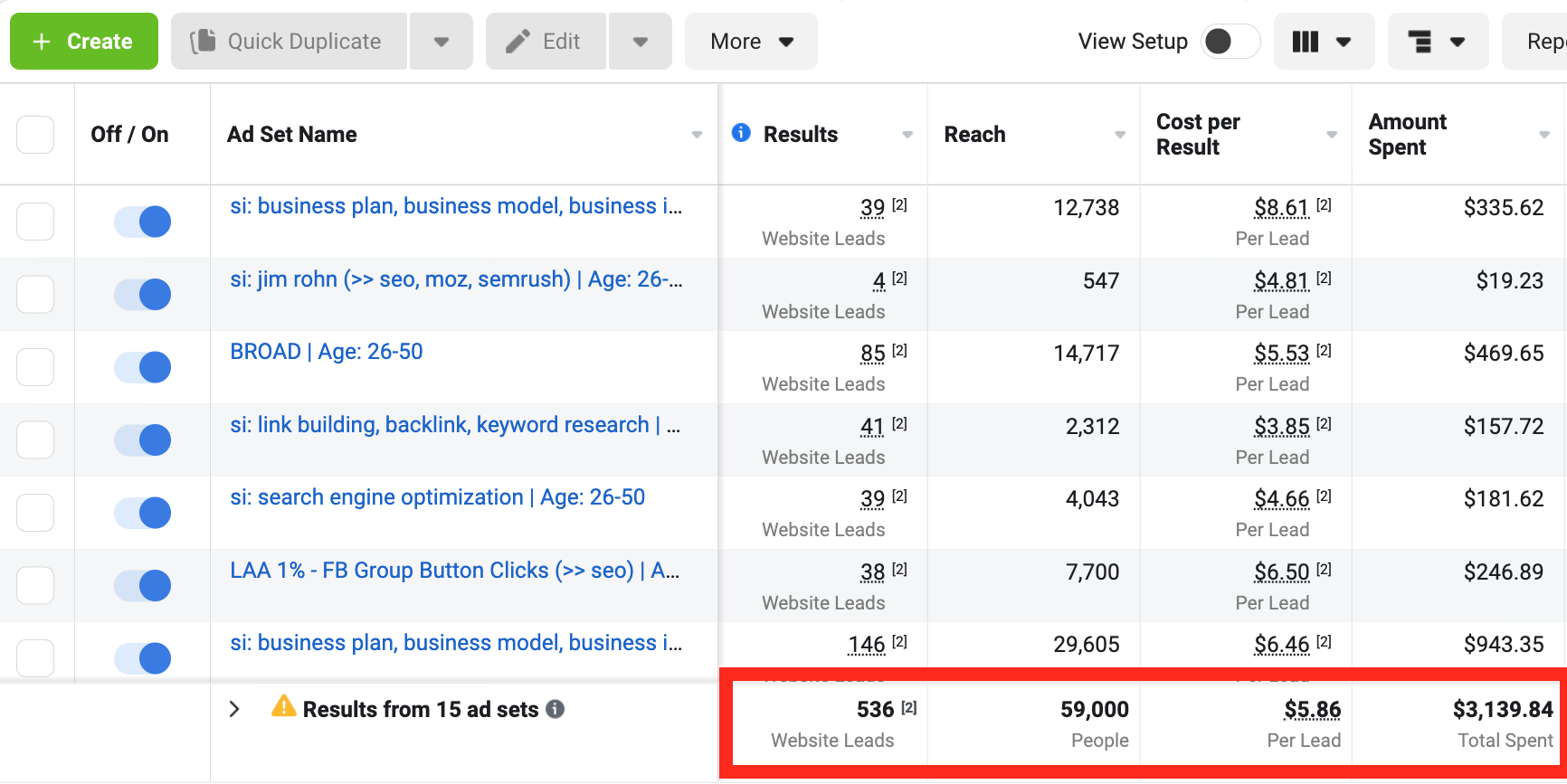
How to setup your Facebook Group
A few quick notes on getting the structure of your Group right.
Create your group based on your customer’s problems, not what you sell
This is where most people make a mistake that holds their Group back from any sort of growth. They pick a topic that’s too broad.
The result: it attracts lots of people, but no quality leads. But that’s not what you want.
You want to create a small, highly-targeted group. Not a large group of random people that goes out of hand quickly.
✔ Based on your audience. Example: SEO agencies, B2B growth marketers.
❌ Not based on your business. Example: SEO
By focusing on your core audience, you can create content that’s targeted for solving their problems. If you’re creating a topic-centered Group, you’ll find that there are lots of people – agencies, entrepreneurs, consultants, and so on. And, you just can’t create content that solves each of their problems.
- Example: We’ve recently started a Facebook Group for our agency, WEBRIS. It targets our core customers, internal marketing managers at B2B companies (not our service which is SEO). So our Group is all about B2B growth tactics where we help B2B marketing managers understand the available strategies they can use for growth.
Leverage mandatory questions for entry to the group
With that out of the way, another important step in setting up your Facebook Group is asking the right intro questions as people opt in to your group. You’ll need these two:
- Ask for their email in exchange for goodies. This will give you their email address for entering them into your sales funnel.
- Ask if they’re interested in having a conversation. This is crucial for getting permission to DM them. Once you have their approval, the setter can then follow up with members to ask whether they’ve read your free guide or used the template and if there are any questions she can answer for them.

Use “Guides” to host gated content
Last piece in the set-up process: guides to structure in group training. This is the free goodie that you’ll dangle as a carrot when you run ads to attract the right people to your Facebook Group.
The key is to create a guide within the group so you aren’t moving people away from the platform. Not only is this a better way to engage them, but it’s an excellent way to stay in Facebook’s good books. Why? Because the algorithm doesn’t appreciate you sharing links to drive people away from their platform.
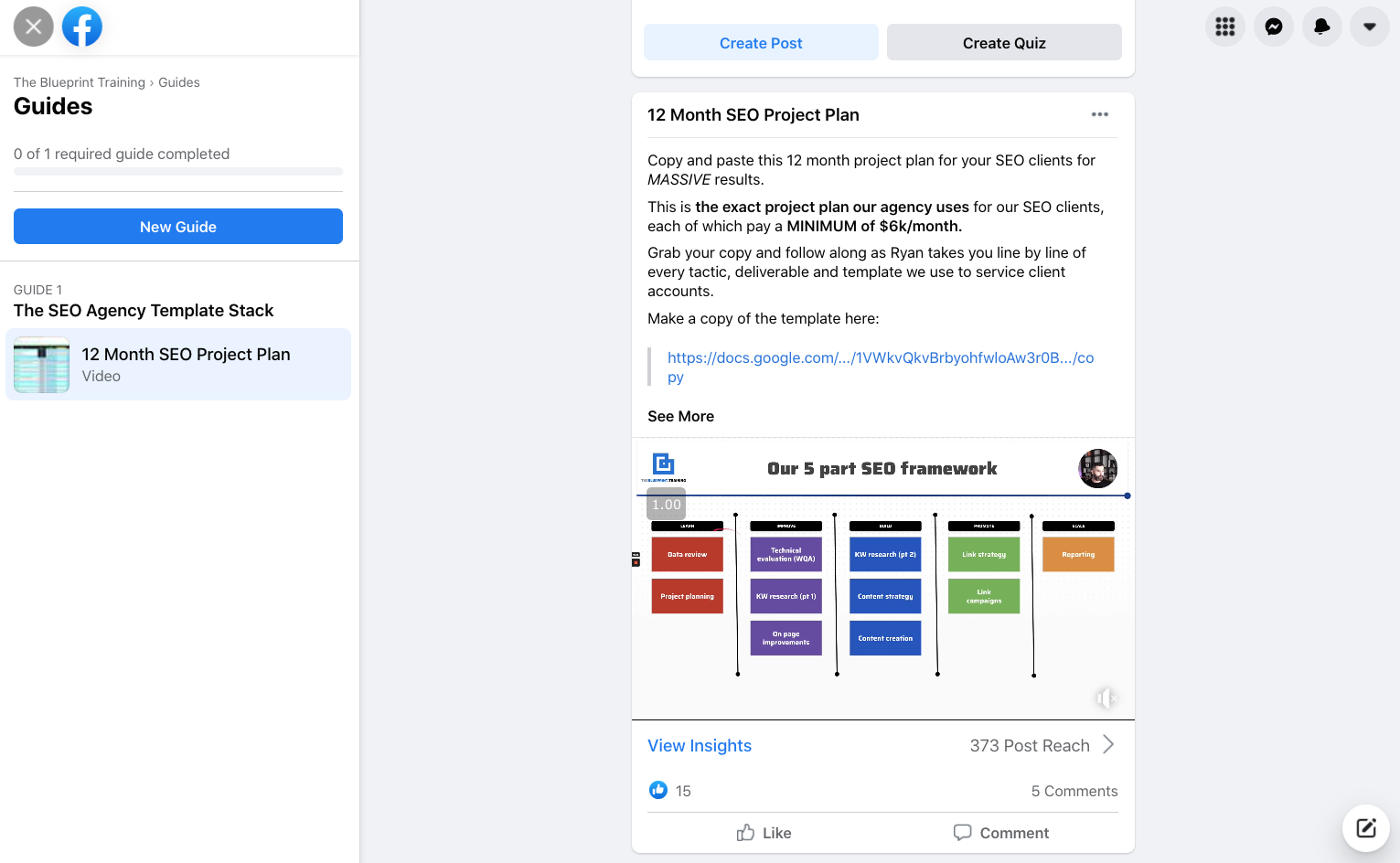
How to grow your Facebook Group
Keep a razor-sharp focus on creating a group of like-minded people. Foster communications with them and be helpful.
This also means you DO NOT:
❌ Cross-promote the Group on other networks. Crossing promotion will bring all sorts of people to your Facebook Group. This means you’ve got to be ready to say goodbye to targeted leads.
❌ Ask people or invite them to join. Well, this is plain annoying. So don’t do it. And, same as above, it drives unengaged people to your Group, which beats its very purpose.
Remember, a small but highly-target group of people is so much better than a large group of random people.
Now, for what you SHOULD DO to grow your Group…
Create a good front end (MICRO offer)
This offer has to be relevant to your target audience. For us, it’s the project plan template – a simple Google Sheets file that lays out a 12 month SEO project plan. We recorded a 10 minute video walking people through the template and host it as a Guide inside the Group.
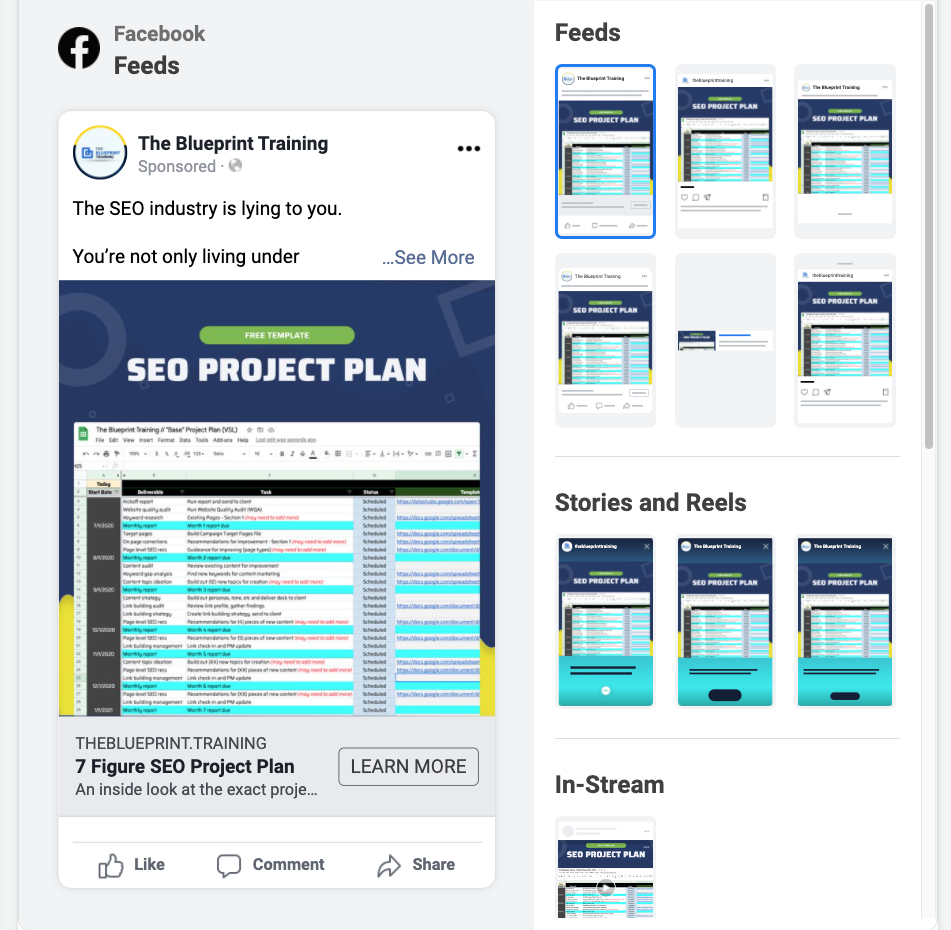
Use Facebook Ads to promote
This makes the most sense to promote your group and get a good response too. So once you put out a good offer, you ask people to join the group to get it. This way, people don’t even have to leave the platform or download any other app to join you. They’ll see the ad, click to get the free goodie, and enter your group. Simple. In fact, the tactic has cut our cost per acquisition to half and our engagement rate has increased three times as compared to email.
Focus on engagement, not volume
Don’t treat your Facebook group as a content promotion dump. Keep your blog post and YouTube video links out. Focus on fostering a community of like minded people who are there for the same reason. This means you’ll end up rejecting more people than letting in (we reject 50% of people who try and join). A small engaged community is better than a large dead one.
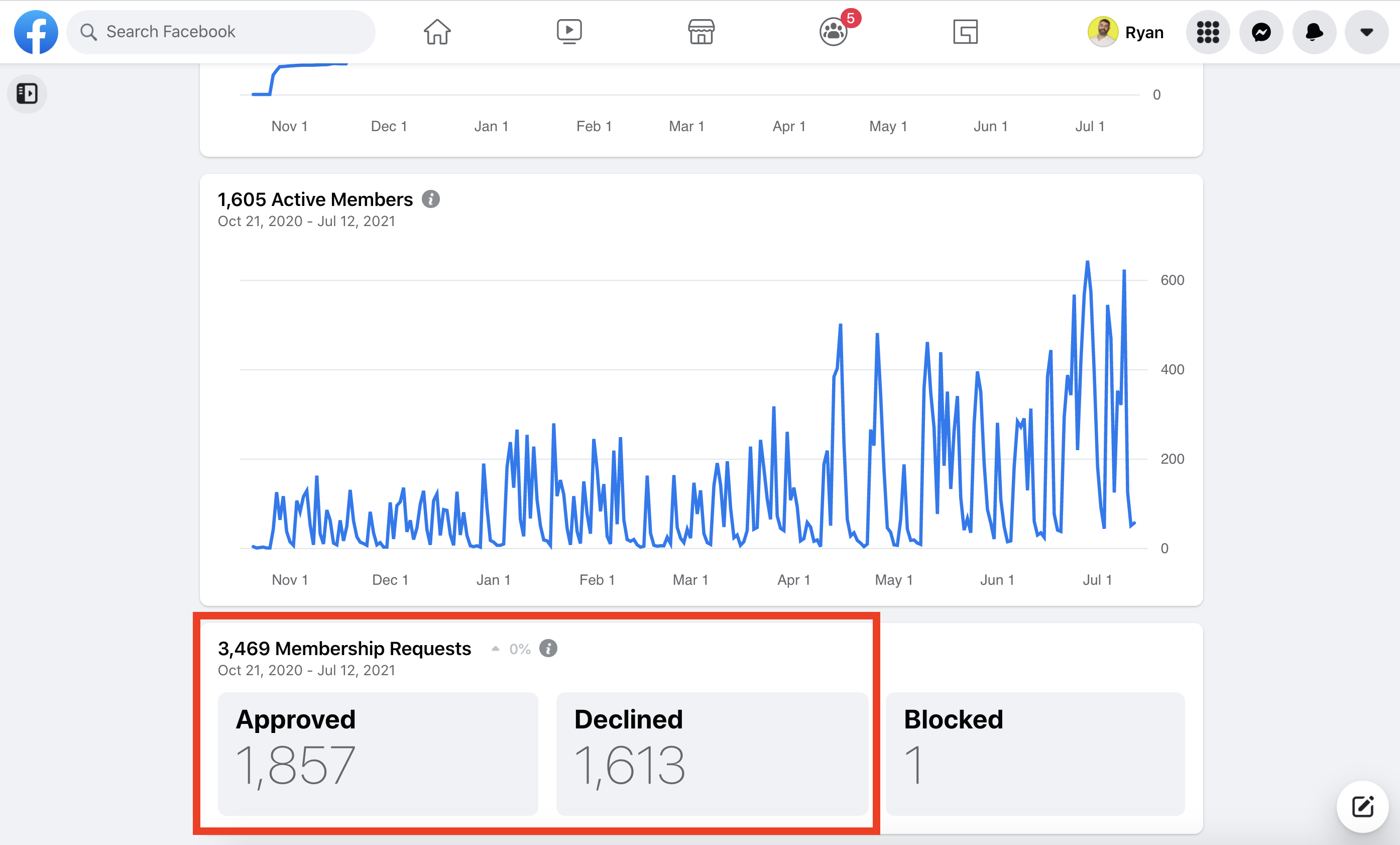
Creating content for your Facebook Group
Here’s what to do instead: consistently provide good content in the group.
Since you want to nurture people with value, there’s no better way to do so than by sharing content that’s created specifically for the group. It’s content that’s created to meet your Group members’ level of awareness, therefore, it provides them tremendous value.
Sure, this content can be repurposed content, but it has to meet the members’ awareness and be native to the Group.
So here’s the type of content we recommend you create…
Organic posts (1x/week)
This is written content that can be a long-form copy, may contain an image or video – whatever you prefer. But focus on storytelling to provide value and build engagement with the post.
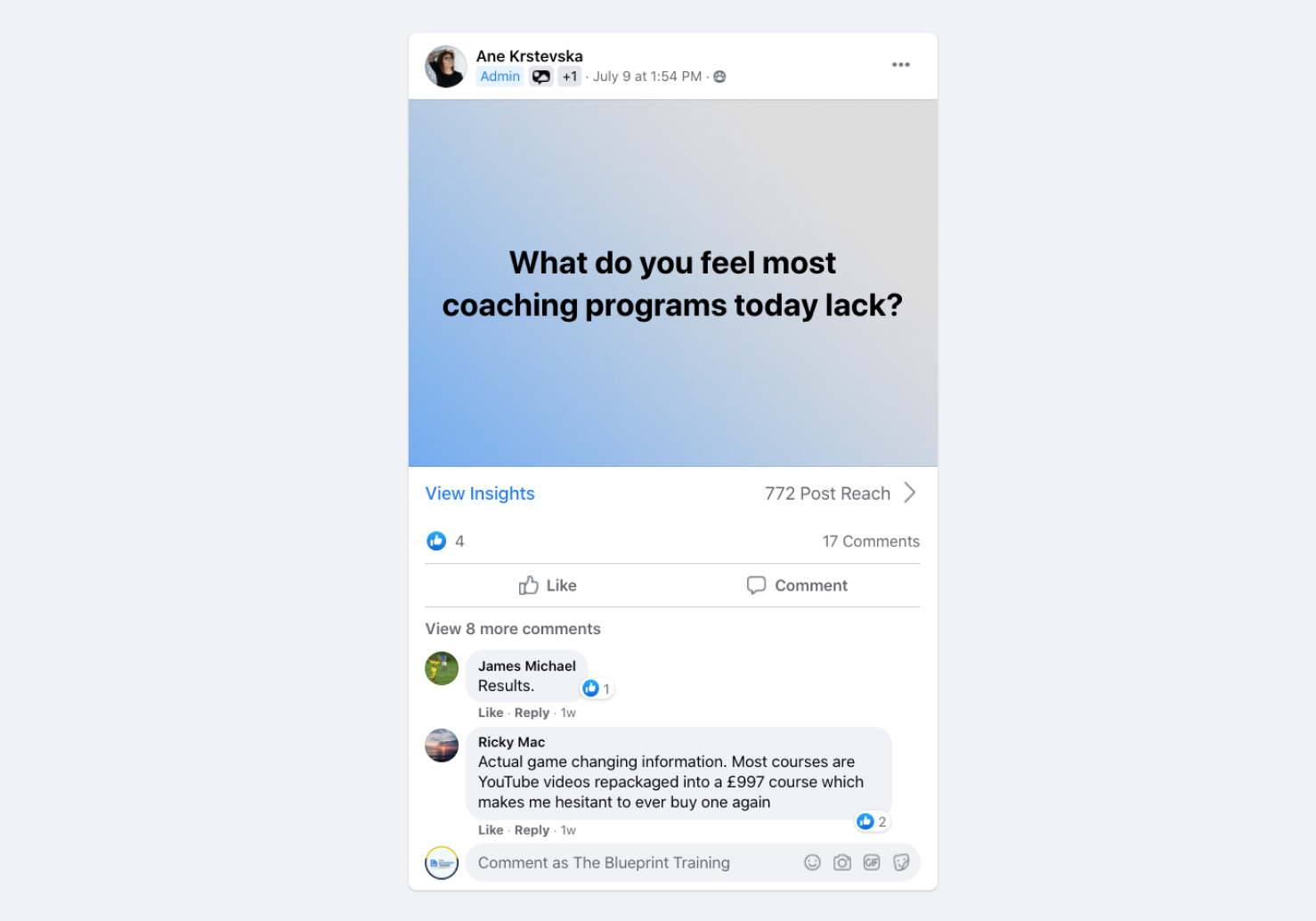
FB Live video events (1x/week)
As I said, a subject matter expert should deliver this. Again, focus on value. Ask questions and answer questions. And, if you can’t answer all questions within the live episode, get the setter to answer them and share with the relevant people.
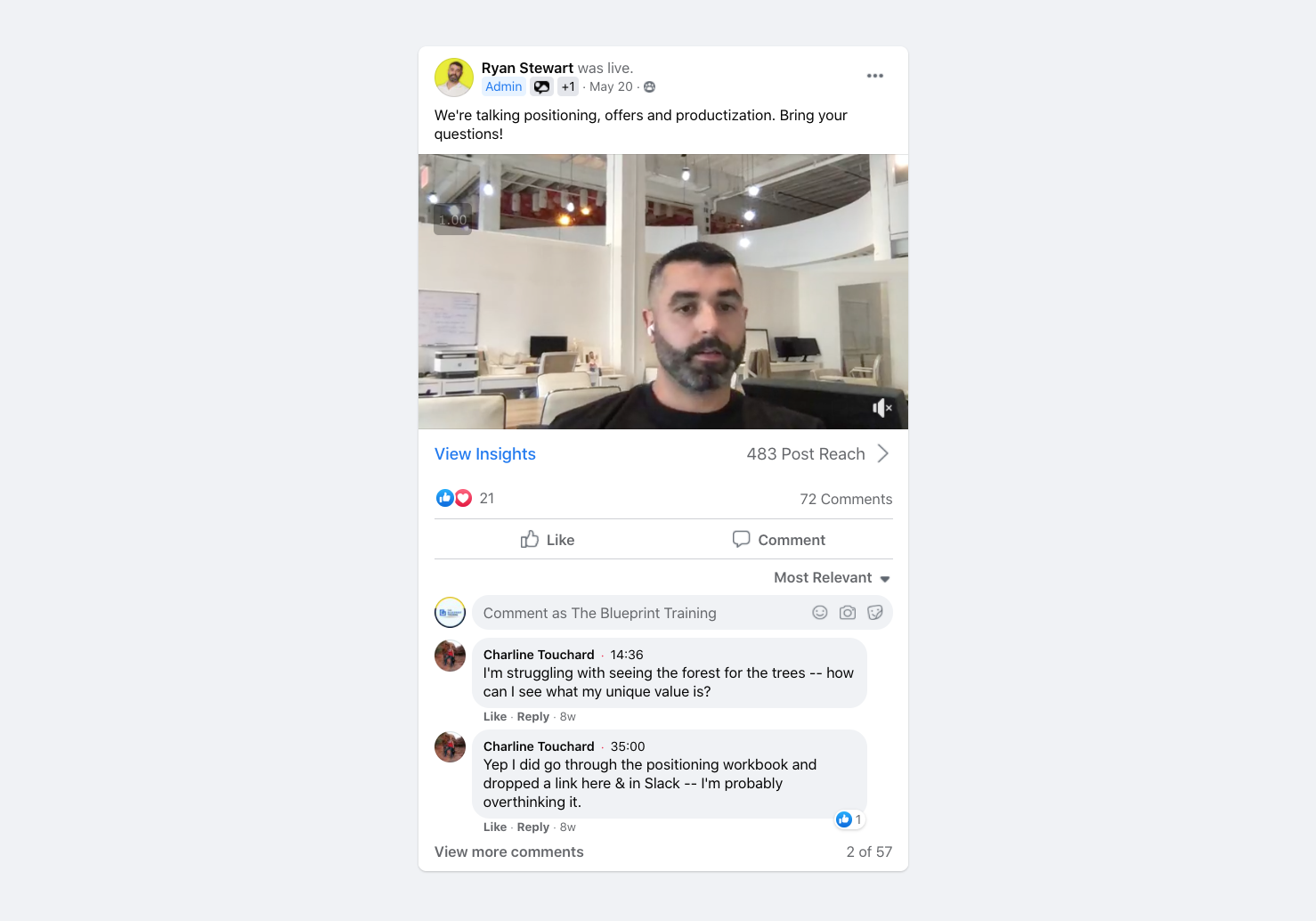
Promotional posts (2x/month)
Here’s where you share your content – case studies, testimonials, price increase/sale. Make sure you write a compelling copy to go with the content. That’s how you’ll get people to actually consume content.
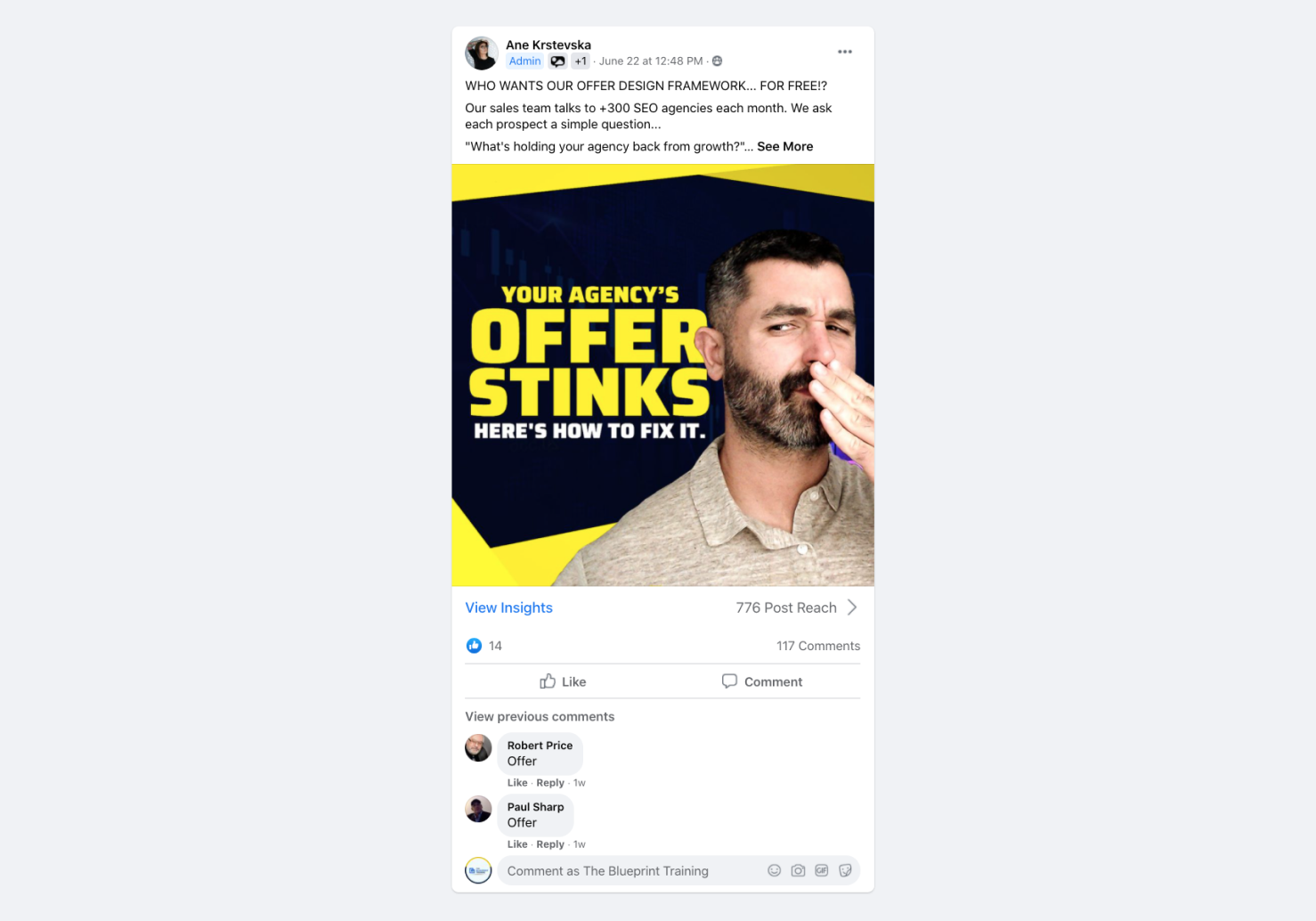
UGC or user-generated content
This builds up over time. And, it involves answering everything that gets posted in the group – it’s why a community manager is important. No question or comment should ever go unanswered.
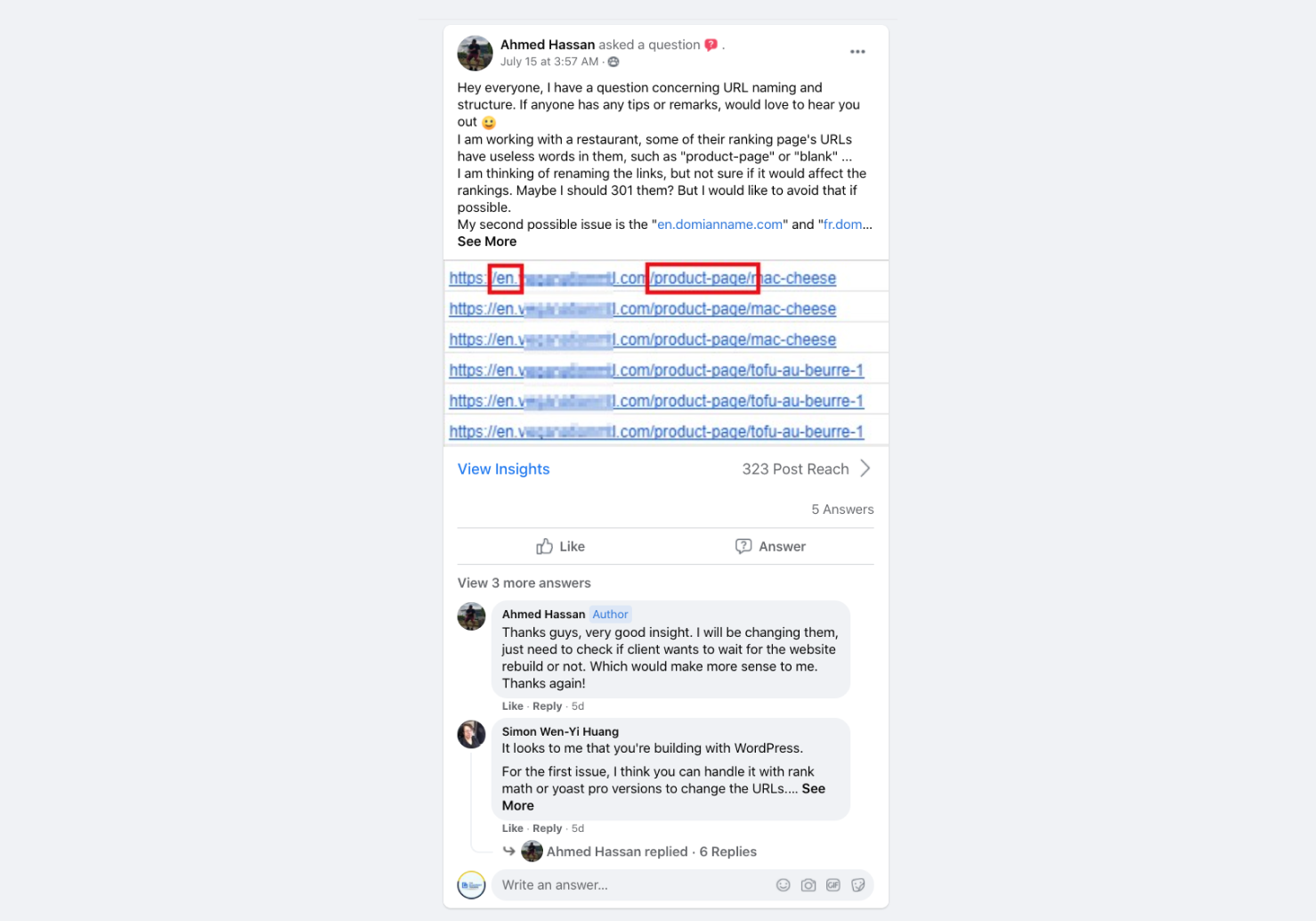
Taken action
I’ve given you everything you need to start, grow and monetize your own Facebook Group.
Need help?
Our team of consultants are standing by to walk you through this process step by step.
Book a time here that works for you and let’s talk about how we can help you build your own profitable Facebook Group.
